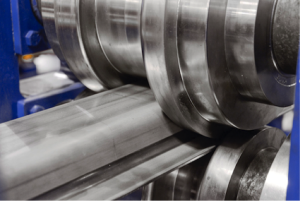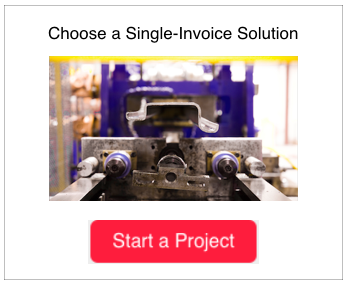 The roll forming process hasn’t changed much in the many years it’s been used by metal fabricators and manufacturers. Despite its resemblance to the original lines of the past, roll forming continues to be an efficient production method that offers in-line processing, consistent profile geometry and high yield.
The roll forming process hasn’t changed much in the many years it’s been used by metal fabricators and manufacturers. Despite its resemblance to the original lines of the past, roll forming continues to be an efficient production method that offers in-line processing, consistent profile geometry and high yield.
And yet, the field faces a problem. A lack of education around roll forming (due in part to its absence from collegiate engineering curriculum) has made it difficult for roll forming to gain traction as a viable alternative to extruding, stamping and press braking. In addition, the process has become commoditized, with little to differentiate one roll former from another.
So what’s the secret to standing out? We believe it is to meet the evolving needs of our customer base. Manufacturers need more than an outsourced metal fabrication vendor; they need a supply chain partner.
Below are four ways we’ve learned to win roll forming business and earn customer loyalty.
1. Provide engineering consultation.
Roll forming has many benefits to manufacturers, including heightened efficiency, consistent product quality and economies of scale. Unfortunately, these differentiators are lost if the component is not designed with roll forming in mind. Previously extruded or press braked parts are likely ill-suited for roll forming, and will lead to a time-intensive, costly result.
Help customers make the transition to an alternative fabrication method by offering in-house engineering services. Engineers experienced in roll forming will be able to identify cost reductions, modify designs to optimize for roll forming, and advise on (or manage) tooling design.
Consider offering these core service areas:
-
Conceptual engineering.
-
Proactive part analysis.
-
Project management.
-
Product design.
-
Prototyping.
2. Offer favorable cost amortization terms.
The high upfront cost roll forming can be a deterrent for manufacturers. Claims of free tooling often come with strings attached, and can lead to greater out-of-pocket expenses later.
Instead, make roll forming feasible through a tooling cost amortization program. This can lessen the impact on cash flow and enable the customer to invest in roll forming tooling.
3. Invest in prototyping and testing.
Speaking of tooling, roll forming requires an upfront commitment of time and money. No customer wants to make this investment only to find later that the profile doesn’t mate with other parts, or that a better design exists.
Take the time in the early stages of the process, and invest in testing. Prototyping and rapid prototyping evaluate the profile’s fit, form and function, before it’s too late.
4. Consider total cost of ownership.
Manufacturers want a partner that can evaluate parts and fabrication processes with the total cost of ownership in mind. Consider the following when it’s time to discuss a roll forming contract:
-
Cash flow: Roll forming is best suited for high volume production. Work with the customer to consider all costs associated with raw materials, production time, tooling, assembly, prototyping and shipping, and how these factors will impact cash flow.
-
Demand forecasts: High volume production presents a smaller margin for error and less production agility. To avoid overproduction, help the customer identify the parts most appropriate for roll forming. For example, a highly customized component with a short product lifecycle is probably not as conducive to roll forming as a versatile component that can be produced in mass quantities.
-
Inventory: Unless demand scales with production, roll forming may require greater inventory storage. Consider partnering with storage solutions that you can refer customers to, or offer it yourself.
-
Sourcing: The switch to roll forming may require the customer to evaluate existing sourcing relationships. Sourcing partnerships might need to be modified to accommodate the higher volumes roll forming requires. An experienced roll forming partner can consult on how the processing switch will impact sourcing needs and lead times.
The key to differentiation is to be more than just another vendor. Manufacturers have spoken; they want a single-invoice supply chain solution. It’s time for us to respond.
Image Credit: Hynes Industries

